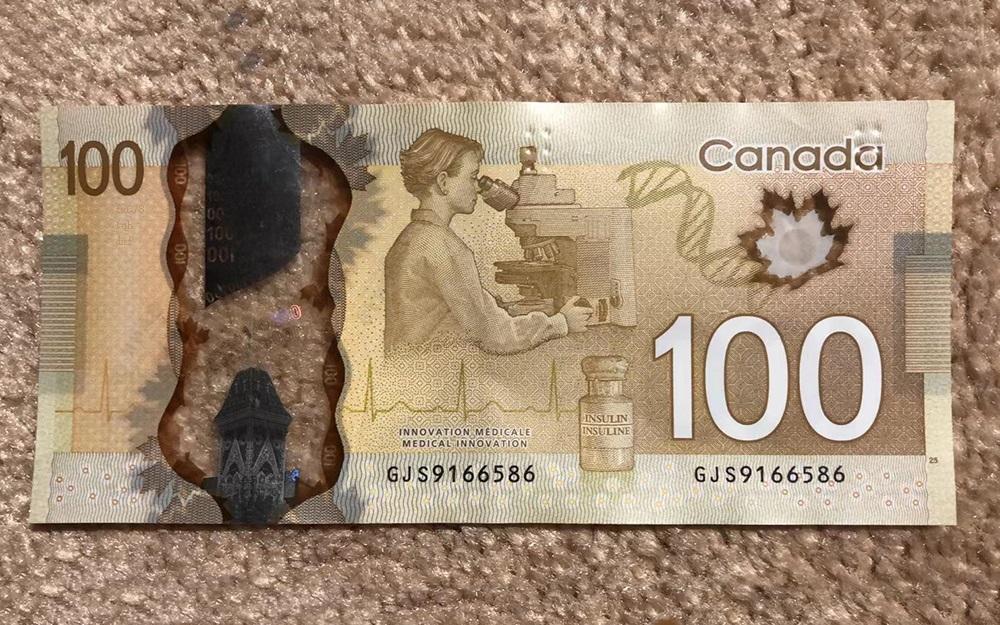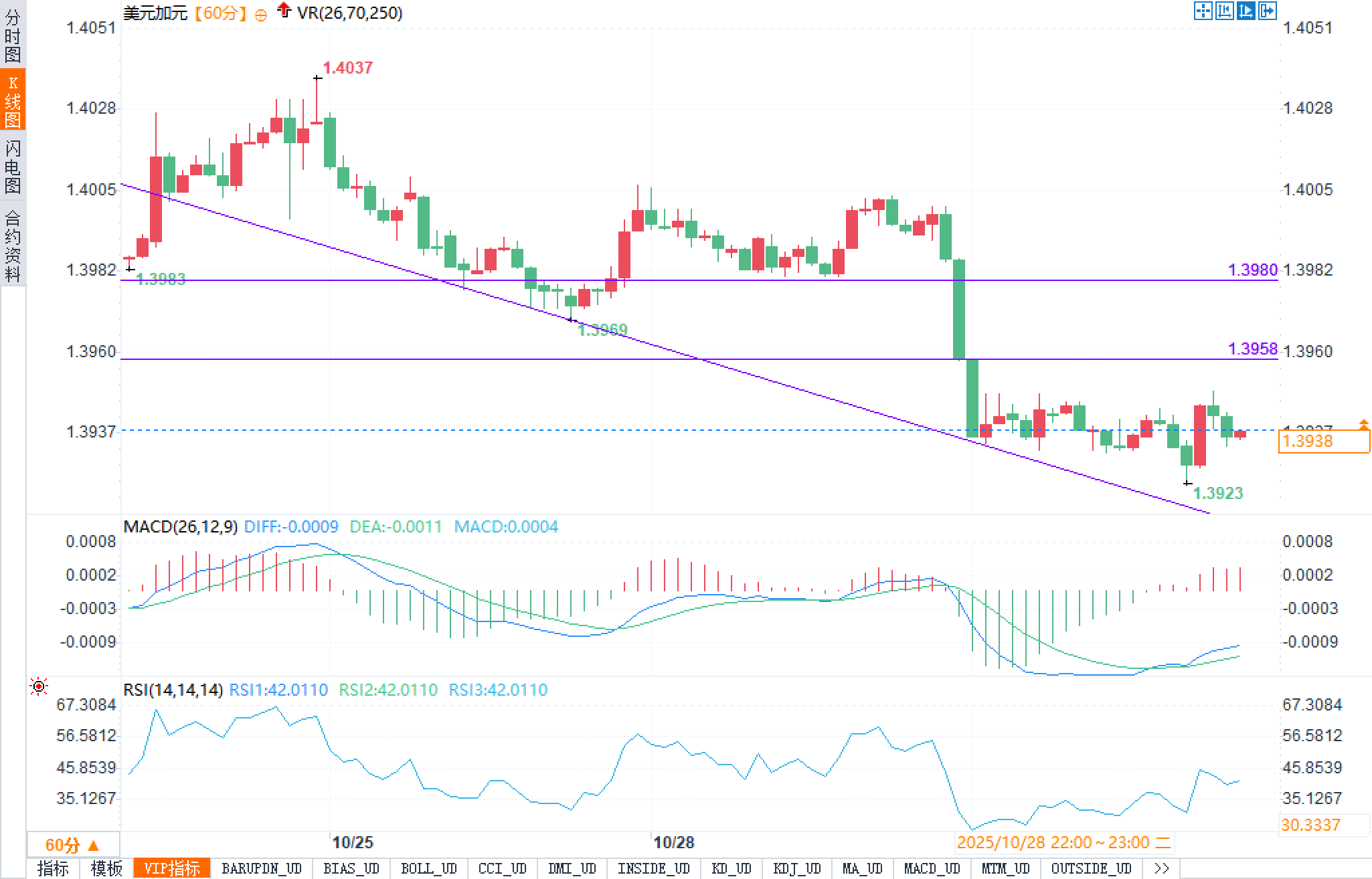The Bank of Canada's 25-basis-point rate cut is already a given; will the Canadian dollar live or die?
2025-10-29 19:32:08

Fundamentals
The Bank of Canada: The market has almost booked an October rate cut into the "script." Over the past two weeks, bets on a 25 basis point cut have rapidly increased, currently implied at around 80%. If this occurs, the benchmark interest rate will fall from 2.50% to 2.25%, continuing the same cut as in September. The main reasons are threefold: First, weak growth—real GDP declined by 1.6% annualized in the second quarter; second, cooling employment momentum—although September saw an unexpected increase of 60,000 jobs and the unemployment rate remained at 7.1%, it was highly volatile; third, inflation remains above target but generally moderate—September CPI rose 2.4% year-on-year, core CPI returned to 2.8%, and the central bank's preferred Common/Trimmed/Median rates are 2.7%, 3.1%, and 3.2%, respectively. Therefore, a gradual easing through "meeting after meeting" remains the main theme. However, some argue for a postponement to December: inflation and employment are expected to be strong in October, and a further cut at that time would send a stronger dovish signal; uncertainty surrounding external tariffs is also rising. If we choose to wait and see tonight, a pullback is expected to benefit the Canadian dollar in the short term, but the medium-term direction will depend on subsequent data.
The Federal Reserve: The dollar's "intraday elasticity" may be triggered by disagreement among voting members. The dollar has been consolidating within a narrow range for several days with a slight upward bias. The yield on the 10-year US Treasury note is hovering below 4.00%, while equity market futures remain high. The Fed is widely expected to cut rates by another 25 basis points after its "risk-management" rate cut in September, bringing the target range for the federal funds rate to 3.75%–4.00%. The statement may emphasize "increased downside risks to employment," and the Chairman is expected to continue the cautiously accommodative guidance at the press conference. The unexpected factor is whether one or two dissenting votes will be cast; if so, the dollar may receive intraday support. On the balance sheet level, policymakers are expected to announce the end of the balance sheet reduction process; previous statements indicated that passive reduction would cease when reserves are "slightly above ample levels." Currently, reserves are approximately $2.93 trillion, close to the estimated threshold of $2.7 trillion.
Schedule and Pricing: The Bank of Canada will announce its policy at 21:45 tonight, followed by a press conference at 22:30. The swap market has already priced in a cumulative rate cut of approximately 31 basis points this year. If tonight's rate cut is only 25 basis points and the wording is neutral, the impact may be limited; however, if the Bank of Canada adopts a "skip-the-line" wait-and-see approach or uses more hawkish wording, the USD/CAD exchange rate is likely to decline.
Technical aspects:
The hourly chart shows that the exchange rate fell from 1.4037 and followed the descending trendline, with a long bearish candle breaking through the static level of 1.3958. It found support at a low of 1.3923 and is currently consolidating around 1.3940. The two purple horizontal lines on the chart mark 1.3980 and 1.3958 respectively; the former is the first short-term resistance, while the latter has turned from support to resistance. The sloping trendline intersects the price near 1.3960, indicating a significant resistance effect.

In terms of indicators, the MACD (26,12,9) shows DIF at -0.0009, DEA at -0.0011, and the histogram at 0.0004. The DIF has slightly crossed above the DEA but remains below the zero line, indicating that the bearish momentum has weakened but not reversed. The RSI is around 42, having previously rebounded from around 30 but failing to return to the neutral zone, suggesting the rebound is mainly a technical correction. If it breaks above 1.3958 and holds above the trendline, the target is 1.3980; conversely, if it breaks below 1.3923 with increased volume, the psychological level of 1.3900 will be tested.
Market Sentiment Observation
Prior to the event, traders tended to reduce nominal exposure, and implied volatility near short-term at-the-money rates rose moderately without a panic spike, indicating that the market remained confident in the baseline scenario of a 25 basis point rate cut by the Bank of Canada plus a 25 basis point rate cut by the Federal Reserve with dovish guidance. The stability of the equity market and the consolidation of the 10-year US Treasury yield below 4.00% provided marginal support for the US dollar, but this was more a reflection of liquidity and safe-haven demand than trend-driven buying. For the Canadian dollar, the further downward shift in the yield curve and the stickiness of inflation led to a cautious consensus: if tonight's statement emphasizes data dependence and "waiting for more evidence," it could easily trigger reflexive volatility of "selling expectations first and buying the facts later."
Market Outlook
Short-term (1-3 days): The technical downtrend structure remains intact, with 1.3958-1.3980 forming a continuous resistance zone. Before the central bank's decision, the exchange rate is likely to remain within the 1.3923-1.3960 range. A directional breakout requires details that deviate from the consensus regarding policy. If the Bank of Canada holds rates steady or adopts significantly stronger rhetoric, the USD/CAD pair is likely to test 1.3923 or even 1.3900. If a rate cut is implemented as expected and is more dovish, an upward move to test 1.3980 and potentially extend towards 1.4037 is not impossible, but this requires a synchronized dovish stance from the Federal Reserve.
Medium-term (1-4 weeks): The misalignment between Canada's slowing growth and sticky inflation requires continued policy balancing; if the US cuts interest rates to 3.75%-4.00% and its balance sheet reduction nears its end, the interest rate advantage will diminish. With these two factors at play, the USD/CAD pair is more likely to fluctuate within the 1.3900-1.4050 range, awaiting clearer direction from data and policy divergences. Only when Canadian data continues to improve, leading to a pause-and-observation phase in the rate-cutting cycle, or when US growth significantly cools and stronger policy divergence emerges, will a trend-following market be possible.
- Risk Warning and Disclaimer
- The market involves risk, and trading may not be suitable for all investors. This article is for reference only and does not constitute personal investment advice, nor does it take into account certain users’ specific investment objectives, financial situation, or other needs. Any investment decisions made based on this information are at your own risk.





















